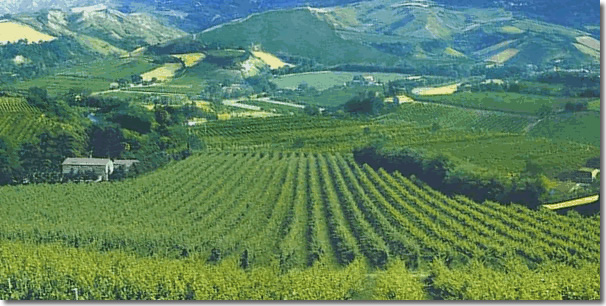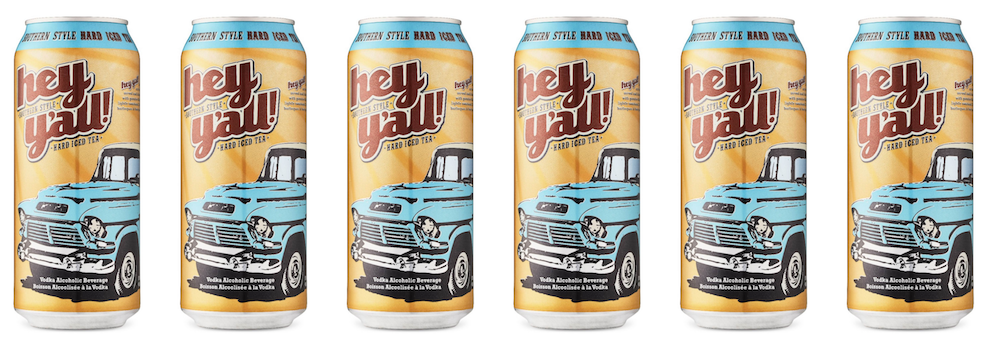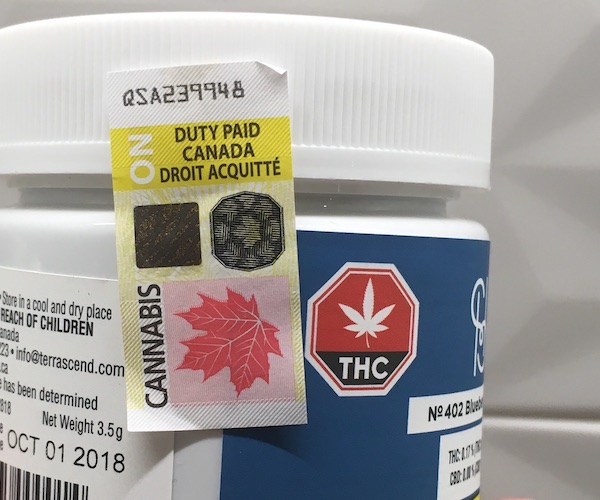by Nicole Campbell for Lifford Wine Agency, a ‘Certified Good Food Fighter‘

Toronto streets are speckled with chefs and restauranteurs making their nonna’s proud one pasta dish at a time. Nothing complements rustic Italian cuisine quite like wines of the mother country.
All Italian wine lists – although potentially divine – are filled with intimidating names, as difficult to pronounce as possible (bonus points!). While most wine lovers easily navigate the rivers of Riesling, Chardonnay, Pinot Noir and Cab – rivers I’d love to swim in, by the way – a discussion of Cortese, Glera, Dolcetto and Corvina leave most searching for a paddle. And by paddle I mean smart phone.
It is with data packages and cellphone etiquette in mind that I present Italian Wine 101 by Nick Keukenmeester, a breakdown of important regions and grape types. Read it once. Read it twice. Read it a third time on the streetcar to Campagnolo.
—–
Piemonte [Piedmont]
Translation: the Foot of the Mountains and as Piemonte looks up to the Italian Alps, the name is more than fitting. Here live some of the most age-worthy and noble reds in all of Italy, along with exotic whites of finesse and charm.
The sparkling wines of Asti have introduced many people to both alcohol and bubbles. Gavi is made of the Cortese grape and these wines are soft and light with no oak. Arneis is a grape nearly extinct just a few years ago, that has seen a resurgence of interest. It makes light whites with a bitter almond note that are best enjoyed in their youth.
Dolcetto makes purple reds that are forward and fruity for early drinking- Dolcetto literally meaning “little sweet one”. Barbera is grown extensively in both Alba and Asti as well as elsewhere. It is the grape most often enjoyed locally and can make wines of great distinction with robust character and a velvety almost chocolatey texture.
Nebbiolo is the king of grapes and occupies the throne alongside Sangiovese for wines of great quality. It is from Nebbiolo that the icon wines of Gattinara, Barbaresco and Barolo are made. Historically the wines of Gattinara were the most acclaimed, but today it is the two chiefs of the Langhe hills that fetch the attention of international wine lovers
Barolo offers the most powerful expression of the Nebbiolo grape. It comes from the vineyards about the town of Barolo and the neighbouring villages of La Morra, Castiglione Falletto, Serralunga d’Alba and Monteforte d’Alba. The wines often come from single vineyards and require significant ageing in both barrel and bottle. Tannin and acid dominate the early life of this wine, but in time complex aromas of plum, dried herbs, roses, tar and liquorice begin to surface. The wine never has more than a tawny colour so it is easily distinguished from other local grapes, just by looking.
Barbaresco is the second great Nebbiolo region of Piemonte, but only dates back to 1890. The wines here tend to be rounder and fruitier than their neighbour eight miles to the south-west. This is because the grapes ripen earlier in Barbaresco. Barbaresco has also shown more of a tendency to embrace modern winemaking techniques with the use of French oak barrels being more common. This is in part due to the influence of Angelo Gaja, but much wine is still made in the traditional aged, large oval casks. Either way, they can rank as some of the finest wines on earth. Barbarescos are formidable and candidates for long term cellaring.
Lombardia
Lombardia is the largest and most heavily populated region in Italy and has Milano in its borders. The soft whites of Lugana on Lake Garda are now known to many. Although it is not famous for its fine wines, it is here that Italy’s finest sparkling wines are made. Despite the popularity of Piemontese Asti and Veneto’s Prosecco, there is no doubt that the quality crown belongs to Franciacorta.
This legal region [DOCG] has only existed since 1995 and is devoted to traditional method (i.e. Champagne) sparkling wine. These wines were first made in 1968 by Maurizio Zanelli at Ca’ del Bosco and he continues there today.
Here the rules are stricter than in Champagne. The wines cannot be released until 25 months after harvest, of which 18 months must be in contact with the yeast in the bottle (compared to 15 months in the case of Champagne). Franciacorta Millesimato may not be sold until at least 37 months after harvest, of which 30 months must be in contact with the yeast and Franciacorta Satèn must be a Blanc de Blancs with only the use of Chardonnay and/or Pinot Bianco permitted, with only 4.5 atmospheres of pressure instead of 6. All these rules ensure wines that are often better than their French neighbours and at a significantly better price.

Veneto
Veneto is the home of many famous Italian wines including Soave, Prosecco and Bardolino, but it is Valpolicella that has truly captured international attention. This is due to Amarone. Traditional Valpolicella wines tend to be elegant and fruity. Valpolicella is made from Corvina, Rondinella and Molinara and these same grapes make the more famous and expensive Amarone. The latter wine is made by taking these grapes at the time of harvest and laying out whole bunches on slatted racks. They are stored in ventilated lodges over several months until they have dried into raisins. The raisins are then pressed and the resulting juice comes in tiny quantity, but incredible intensity. The juice is fermented all the way to dryness, making wines of higher alcohol and amazing power and flavour. It needs a few years to mellow and be enjoyed.
Recioto is made in the same way, but left partially unfermented to retain intense sweetness.
Toscana [Tuscany]
It is hard to rival Tuscany for its cultural, political and economic contribution to the history and foundation of Italy. Today it is the source of some of the world’s worst chick-flicks and some of the world’s best wines.
The famous undulating hills give great exposure to sunlight. No region of Italy is as complex, yet for starters one word will suffice; Sangiovese. Sangiovese in various guises is the base grape for Chianti Classico, Brunello di Montalcino, Vino Nobile di Montepulciano and many of the famous ‘Super-Tuscans’ that have consumed international attention and wallets.
Chianti Classico is the heart of Chianti and represents the original boundaries of this world famous region. It was the first region to be recognized by law, with Grand Duke Cosimo III declaring its limits in 1716. Here the finest wines are now allowed to be made of 100% Sangiovese and most agree that this is the grape’s most pure expression.
Brunello di Montalcino is the glamour boy of Italy. ‘Brunello’ is the name of the local Sangiovese clone and ‘Montalcino’ the region. Ironically, it is also the youngest of Italy’s iconic region and only dates back to 1888, when Ferruccio Biondi-Santi thought to give the local wines their own identity.
Here wines mature to full ripeness in the warmth and the limestone subsoil seems to imbue finesse and complex aromatics. Brunello spends a minimum of two years in cask and a further two years in bottle before it can be released for sale.
Vino Nobile is a poor cousin when it comes to the spotlight, but the wines offer power and density at a great price, even if they lack some of Brunello’s finesse. Here the clone of Sangiovese used is called Prugnolo Gentile, if you want to sound smart. The sandy slopes and warmer weather [than Chianti] make full bodied reds that are less aromatic and elegant than their neighbours, but powerful and delicious.
Many great wines are now made outside the traditional zones of Sangiovese and both Scansano and Bolgheri within Maremma are graduating from supporting players to leading lights of the Italian wine scene. Here international [i.e. French] varietals co-star with Sangiovese and stars are born. [Now that’s a serious analogy!]
Over the following weeks, Nick will present Italian Wine 102, alongside a major Italian offer from Lifford Wine’s portfolio of over 20 producers. Interested? Sign up for Lifford’s weekly newsletter in the email subscription box here.
 Nicole Campbell is a wine blogger and all around worker bee for Lifford Wine Agency, Ontario’s largest supplier of wine to the hospitality industry and VINTAGES. Follow her on twitter @liffordnicole.
Nicole Campbell is a wine blogger and all around worker bee for Lifford Wine Agency, Ontario’s largest supplier of wine to the hospitality industry and VINTAGES. Follow her on twitter @liffordnicole.







